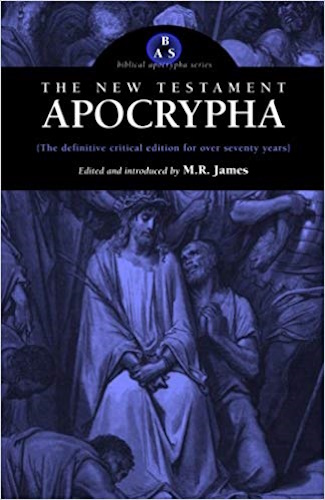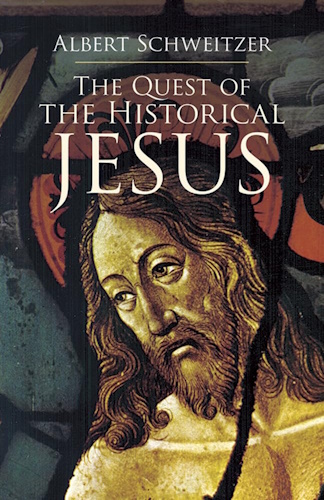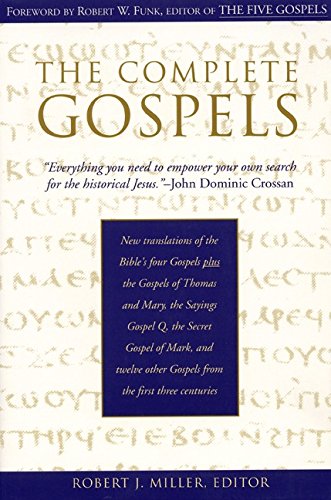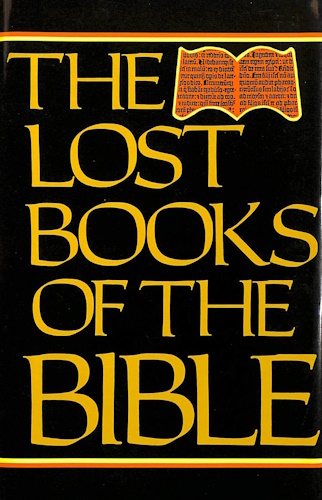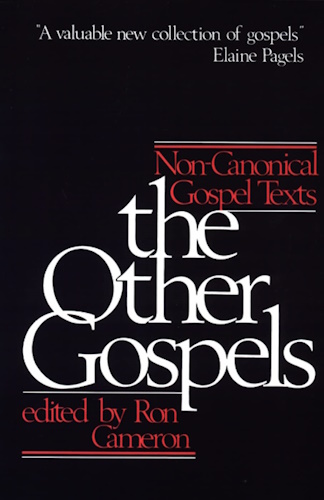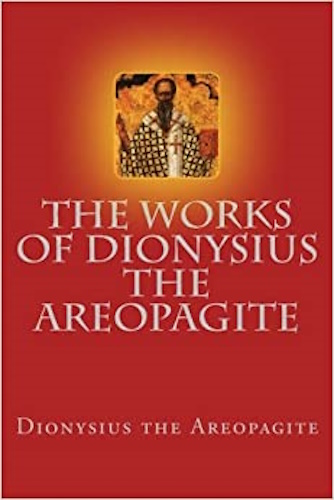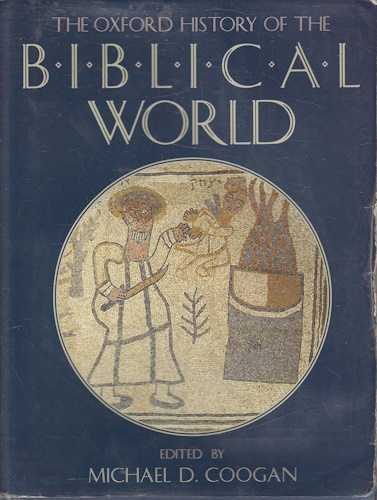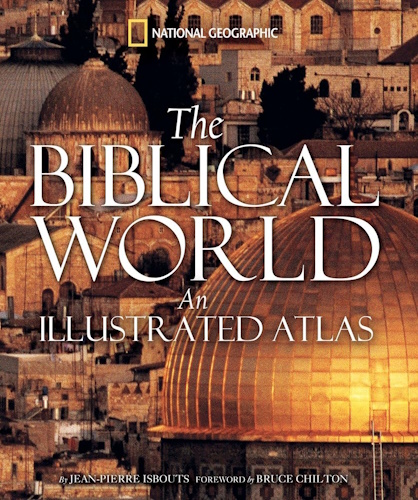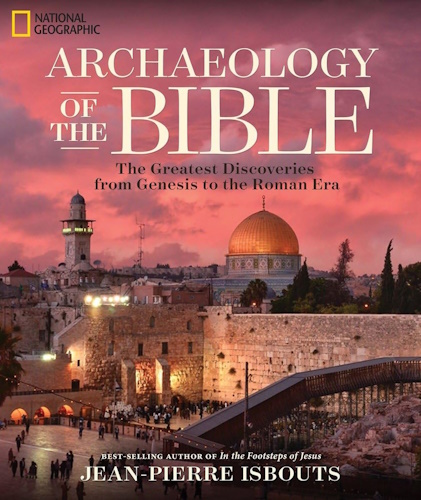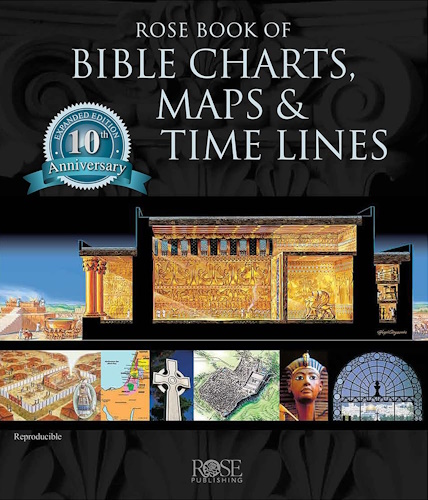
The works of Dionysius the Areopagite
Ecclesiastical Hierarchy
Caput V
I. Concerning sacerdotal Consecrations.
Section I.
Such, then, is the most Divine perfecting work of the Muron But it may be opportune, after these Divine ministrations, to set forth the sacerdotal Orders and elections themselves, and their powers, and operations, and consecrations, and the triad of the superior ranks under them; in order that the arrangement of our Hierarchy may be demonstrated, as entirely rejecting and excluding the disordered, the unregulated, and the confused; and, at the same time, choosing and manifesting the regulated and ordered, and well-established, in the gradations of the sacred Ranks within it. Now we have well shewn, as I think, in the Hierarchies already extolled by us, the threefold division of every Hierarchy, when we affirmed that our sacred tradition holds, that every Hierarchical transaction is divided into the most Divine Mystic Rites, and the inspired experts and teachers of them, and those who are being religiously initiated by them.
Section II.
Thus the most holy Hierarchy of the supercelestial Beings has, for its initiation, its own possible and most immaterial conception of God and things Divine, and the complete likeness to God, and a persistent
page 124
habit of imitating God, as far as permissible. And its illuminators, and leaders to this sacred consecration, are the very first Beings around God. For these generously and proportionately transmit to the subordinate sacred Ranks the ever deifying notions given to them, by the self-perfect Godhead and the wise-making Divine Minds. Now the Ranks, who are subordinate to the first Beings, are, and are truly called, the initiated Orders, as being religiously conducted, through those, to the deifying illumination of the Godhead. And after this,—the heavenly and supermundane Hierarchy,—the Godhead gave the Hierarchy under the Law, imparting its most holy gifts, for the benefit of our race, to them (as being children according to the Logion), by faint images of the true, and copies far from the Archetypes, and enigmas hard to understand, and types having the contemplation enveloped within, as an analogous light not easily discerned, so as not to wound weak, eyes by the light shed upon them. Now to this Hierarchy under the Law, the elevation to spiritual worship is an initiation. Now the men religiously instructed for that holy tabernacle by Moses,—the first initiated and leader of the Hierarchs under the Law,—were conductors; in reference to which holy tabernacle,—when describing for purposes of instruction the Hierarchy under the Law,—he called all the sacred services of the Law an image of the type shewn
page 125
to him in Mount Sinai. But "initiated" are those who are being conducted to a more perfect revelation of the symbols of the Law, in proportion to their capacity. Now the Word of God calls our Hierarchy the more perfect revelation, naming it a fulfilment of that, and a holy inheritance. It is both heavenly and legal, like the mean between extremes, common to the one, by intellectual contemplations, and to the other, because it is variegated by sensible signs; and, through these, reverently conduces to the Divine Being. And it has likewise a threefold division of the Hierarchy, which is divided into the most holy ministrations of the Mystic Rites, and into the Godlike ministers of holy things, and those who are being conducted by them, according to their capacity, to things holy.
And each of the three divisions of our Hierarchy, comformably to that of the Law, and the Hierarchy, more divine than ours, is arranged as first and middle and last in power; consulting both reverent proportion, and well-ordered and concordant fellowship of all things in harmonious rank.
Section III.
The most holy ministration, then, of the Mystic Rites has, as first Godlike power, the holy cleansing of the uninitiated; and as middle, the enlightening instruction of the purified; and as last, and summary of the former, the perfecting of those instructed in
page 126
science of their proper instructions; and the order of the Ministers, in the first power, cleanses the uninitiated through the Mystic Rites; and in the second, conducts to light the purified; and in the last and highest of the Ministering Powers, makes perfect those who have participated in the Divine light, by the scientific completions of the illuminations contemplated. And of the Initiated, the first power is that being purified; and the middle is that being enlightened, after the cleansing, and which contemplates certain holy things; and the last and more divine than the others, is that enlightened in the perfecting science of the holy enlightenment of which it has become a contemplator. Let, then, the threefold power of the holy service of the Mystic Rites be extolled, since the Birth in God is exhibited in the Oracles as a purification and enlightening illumination, and the Rite of the Synaxis and the Muron, as a perfecting knowledge and science of the works of God, through which the unifying elevation to the Godhead and most blessed communion is reverently perfected. And now let us explain next the sacerdotal Order, which is divided into a purifying and illuminating and perfecting discipline.
Section IV.
This, then, is the all-sacred Law of the Godhead, that, through the first, the second are conducted to Its most Divine splendour. Do we not see the material substances of the elements, first approaching, by preference, things which are more congenial
page 127
to them, and, through these, diffusing their own energy to other things? Naturally, then, the Head and Foundation of all good order, invisible and visible, causes the deifying rays to approach the more Godlike first, and through them, as being more transparent Minds, and more properly adapted for reception and transmission of Light, transmits light and manifestations to the subordinate, in proportions suitable to them.
It is, then, the function of these, the first contemplators of God, to exhibit ungrudgingly to those second, in proportion to their capacity, the Divine visions reverently gazed upon by themselves, and to reveal the things relating to the Hierarchy (since they have been abundantly instructed with a perfecting science in all matters relating to their own Hierarchy, and have received the effectual power of instruction), and to impart sacred gifts according to fitness, since they scientifically and wholly participate in sacerdotal perfection.
Section V.
The Divine Rank of the Hierarchs, then, is the first of the God-contemplative Ranks; and it is, at the same time, highest and lowest; inasmuch as every Order of our Hierarchy is summed up and fulfilled in it. For, as we see every Hierarchy terminated in the Lord Jesus, so we see each terminated in its own inspired Hierarch. Now the power of the Hierarchical Rank permeates the whole
page 128
sacred body, and through every one of the sacred Ranks performs the mysteries of its proper Hierarchy. But, pre-eminently, to it, rather than to the other Ranks, the Divine institution assigned the more Divine ministrations. For these are the perfecting images of the supremely Divine Power, completing all the most Divine symbols and all the sacred orderings. For though some of the worshipful symbols are consecrated by the Priests, yet never will the Priest effect the holy Birth in God without the most Divine Muron; nor will he consecrate the mysteries of the Divine Communion, unless the communicating symbols have been placed upon the most Divine Altar; and neither will he be Priest himself, unless he has been elected to this by the Hierarchical consecrations. Hence the Divine Institution uniquely assigned the dedication of the Hierarchical Ranks, and the consecration of the Divine Muron and the sacred completion of the Altar, to the perfecting powers of the inspired Hierarchs.
Section VI.
It is, then, the Hierarchical Rank which, full of the perfecting power, pre-eminently completes the perfecting functions of the Hierarchy, and reveals lucidly the sciences of the holy mysteries, and teaches their proportionate and sacred conditions and powers. But the illuminating Rank of the Priests conducts those, who are being initiated under the Rank of, the inspired Hierarchs, to the
page 129
Divine visions of the Mystic Rites, and in co-operation with it, ministers its proper ministrations. Whatever then this Rank may do, by shewing the works of God, through the most holy symbols, and perfecting those who draw nigh in the Divine contemplations, and communion of the holy rites, it yet refers those, who crave the science of the religious services contemplated, to the Hierarch. And the Rank of the Leitourgoi (which is purifying and separates the unfit, previous to the approach to the ministrations of the Priests), thoroughly purifies those who are drawing nigh, by making them entirely pure from opposing passions, and suitable for the sanctifying vision and communion. Hence, during the service of the Birth in God, the Leitourgoi strip him who draws nigh of his old clothing, yea further, even take off his sandals, and make him stand towards the west for renunciation; and again, they lead him back to the east (for they are of the purifying rank and power), enjoining on those who approach to entirely cast away the surroundings of their former life, and shewing the darkness of their former conduct, and teaching those, who have said farewell to the lightless, to transfer their allegiance to the luminous. The Leitourgical Order, then, is purifying, by leading those who have been purified to the bright ministrations of the Priests, both by thoroughly purifying the uninitiated and by bringing to birth, by the purifying illuminations and teachings of the Oracles, and further, by sending
page 130
away from the Priests the unholy, without respect of persons. Wherefore also the Hierarchical institution places it at the holy gates, suggesting that the approach of those who draw nigh to holy things should be in altogether complete purification, and entrusting the approach to their reverent vision and communion to the purifying powers, and admitting them, through these, without spot.
Section VII.
We have shewn, then, that the Rank of the Hierarchs is consecrating and perfecting, that of the Priests, illuminating and conducting to the light; and that of the Leitourgoi purifying and discriminating; that is to say, the Hierarchical Rank is appointed not only to perfect, but also at the same time, to enlighten and to purify, and has within itself the purifying sciences of the power of the Priests together with the illuminating. For the inferior Ranks cannot cross to the superior functions, and, besides this, it is not permitted to them to take in hand such quackery as that. Now the more Divine Orders know also, together with their own, the sacred sciences subordinate to their own perfection. Nevertheless, since the sacerdotal orderings of the well-arranged and unconfused order of the Divine operations are images of Divine operations, they were arranged in Hierarchical distinctions, shewing in themselves the illuminations marshalled into the first, and middle, and last, sacred operations and Ranks; manifesting, as I said, in themselves the well-ordered and
page 131
unconfused character of the Divine operations. For since the Godhead first cleanses the minds which He may enter, then enlightens, and, when enlightened, perfects them to a Godlike perfection; naturally the Hierarchical of the Divine images divides itself into well-defined Ranks and powers, shewing clearly the supremely Divine operation firmly established, without confusion, in most hallowed and unmixed Ranks. But, since we have spoken, as attainable to us, of the sacerdotal Ranks and elections, and their powers and operations, let us now contemplate their most holy consecrations as well as we can.
II. Mysterion of Sacerdotal Consecrations.
The Hierarch, then, being led to the Hierarchical consecration, after he has bent both his knees before the Altar, has upon his head263 the God-transmitted oracles, and the Hierarchical hand, and in this manner is consecrated by the Hierarch, who ordains him by the altogether most holy invocations. And the Priest, after he has bent both his knees before the Divine Altar, has the Hierarchical right hand upon his head, and in this manner is dedicated by the Hierarch, who ordains him with hallowing invocations. And the Leitourgos, after he has bent one of two knees before the Divine Altar, has upon his head the right hand of the Hierarch who ordains him, being completed by him
page 132
with the initiating invocations of the Leitourgoi. Upon each of them the cruciform seal is impressed, by the ordaining Hierarch, and, in each case, a sacred proclamation of name takes place, and a perfecting salutation, since every sacerdotal person present, and the Hierarch who ordained, salute him who has been enrolled to any of the aforenamed sacerdotal Ranks.
III. Contemplation.
Section I.
These things, then, are common both to the Hierarchs, and Priests, and Leitourgoi, in their sacerdotal consecrations,—the conducting to the Divine Altar and kneeling,—the imposition of the Hierarchical hand,—the cruciform seal,—the announcement of name,—the completing salutation.
And special and select for the Hierarchs is the imposition of the Oracles upon the head, since the subordinate Ranks have not this; and for the Priests the bending of both knees, since the consecration of the Leitourgoi has not this; for the Leitourgoi, as has been said, bend the one of two knees only.
Section II.
The conducting then to the Divine Altar, and kneeling, suggests to all those who are being sacerdotally ordained, that their own life is entirely placed under God, as source of consecration, and that their
page 133
whole intellectual self, all pure and hallowed, approaches to Him, and that it is of one likeness, and, as far as possible, meet for the supremely Divine and altogether most holy, both Victim264 and Altar, which purifies, sacerdotally, the Godlike Minds.
Section III.
And the imposition of the Hierarchical hand signifies at once the consecrating protection, by which, as holy children, they are paternally tended, which bequeaths to them a sacerdotal condition and power, and drives away their adverse powers, and teaches, at the same time also, to perform the sacerdotal operations, as those who, having been consecrated, are acting under God, and have Him as Leader of their own operations in every respect.
Section IV.
And the cruciform seal manifests the inaction of all the impulses of the flesh, and the God-imitated life looking away unflinchingly to the manly most Divine life of Jesus, Who came even to Cross and death with a supremely Divine sinlessness, and stamped those who so live with the cruciform image of His own sinlessness as of the same likeness.
Section V.
And the Hierarch calls aloud the name of the consecrations and of those consecrated, the mystery denoting that the God-beloved consecrator is
page 134
manifestor of the supremely Divine choice,—not of his own accord or by his own favour leading those who are ordained to the sacerdotal consecration, but being moved by God to all the Hierarchical dedications. Thus Moses, the consecrator under the Law, does not lead even Aaron, his brother, to sacerdotal consecration, though thinking him both beloved of God and fit for the priesthood, until moved by God to this, he in submission to God, Head of consecration, completed by Hierarchical rites the sacerdotal consecration. But even our supremely Divine and first Consecrator (for the most philanthropic Jesus, for our sake, became even this), did "not glorify Himself," as the Logia say, but He Who said to Him, "Thou art Priest for ever after the order of Melchizedek." Wherefore also whilst Himself leading the disciples to sacerdotal consecration, although being as God chief Consecrator, nevertheless He refers the Hierarchical completion of the work of consecration to His altogether most Holy Father, and the supremely Divine Spirit, by admonishing the disciples, as the Oracles say, not to depart from Jerusalem, but to "await the promise of the Father, which ye heard of Me, that ye shall be baptized in Holy Ghost." And indeed, the Coryphaeus of the disciples himself, with the ten, of the same rank and Hierarchy with himself, when he proceeded to the sacerdotal consecration of the twelfth of the disciples, piously left the selection to
page 135
the Godhead, saying, "Shew265 whom Thou hast chosen," and received him, who was divinely designated by the Divine lot, into the Hierarchical number of the sacred twelve. Now concerning the Divine lot, which fell as a Divine intimation upon Matthias, others have expressed another view, not clearly, as I think, but I will express my own sentiment. For it seems to me that the Oracles name "lot " a certain supremely Divine gift, pointing out to that Hierarchical Choir him who was designated by the Divine election; more particularly, because the Divine Hierarch must not perform the sacerdotal acts of his own motion, but, under God, moving him to do them as prescribed by the Hierarchy and Heaven.
Section VI.
Now the salutation, for the completion of the sacerdotal consecration, has a religious significance. For all the members of the sacerdotal Ranks present, as well as the Hierarch himself who has consecrated them, salute the ordained. For when, by sacerdotal habits and powers, and by Divine call and dedication, a religious mind has attained to sacerdotal completion, he is dearly loved by the most holy Orders of the same rank, being conducted to a most Godlike comeliness, loving the minds similar to himself, and religiously loved by them in return. Hence it is that the mutual sacerdotal salutation is religiously performed, proclaiming the religious
page 136
communion of minds of like character, and their loveable benignity towards each other, as keeping, throughout, by sacerdotal training, their most Godlike comeliness.
Section VII
These things, as I said, are common to the whole sacerdotal consecration. The Hierarch, however, as a distinctive mark, has the Oracles most reverently placed upon his head. For since the perfecting power and science of the whole Priesthood is bequeathed to the inspired Hierarchs, by the supremely Divine and perfecting goodness, naturally are placed upon the heads of the Hierarchs the Divinely transmitted Oracles, which set forth comprehensively and scientifically every teaching of God, work of God, manifestation of God, sacred word, sacred work, in one word, all the Divine and sacred works and words bequeathed to our Hierarchy by the beneficent Godhead; since the Godlike Hierarch, having participated entirely in the whole Hierarchical power, will not only be illuminated, in the true and God-transmitted science of all the sacred words and works committed to the Hierarchy, but will also transmit them to others in Hierarchical proportions, and will perfect Hierarchically in most Divine kinds of knowledge and the highest mystical, instructions, all the most perfecting functions of the whole Hierarchy. And the distinctive feature of the ordination of Priests, as contrasted with the ordering
page 137
of the Leitourgoi, is the bending of the two knees, as that bends only the one, and is ordained in this Hierarchical fashion.
Section VIII.
The bending then denotes the subordinate introduction of the conductor, who places under God that which is reverently introduced. And since, as we have often said, the three Orders of the consecrators, through the three most holy Mystic Rites and powers, preside over the three ranks of those initiated, and minister their saving introduction under the Divine yokes, naturally the order of Leitourgoi as only purifying, ministers the one introduction of those who are being purified, by placing it under the Divine Altar, since in it the minds being purified, are supermundanely hallowed. And the Priests bend both their knees, since those who are religiously brought nigh by them have not only been purified, but have been ministerially perfected into a contemplative habit and power of a life thoroughly cleansed by their most luminous, ministrations through instruction. And the Hierarchy bending both his knees, has upon his head the God-transmitted Oracles, leading, through his office of Hierarch, those who have been purified by the Leitourgic power, and enlightened by the ministerial, to the science of the holy things contemplated by them in proportion to their capacities, and through this science perfecting those who are brought nigh, into the most complete holiness of which they are capable.
page 138263 Ap. C. iv. s. 20; iv. s. 17; viii. s. 4.
264 Christ.
265 Acts i. 24. Ap. C. p. 168.
![]()
![]()
-
Urantia Book, 44:0.11 - The Celestial Artisans
Never in your long ascendancy will you lose the power to recognize your associates of former existences. Always, as you ascend inward in the scale of life, will you retain the ability to recognize and fraternize with the fellow beings of your previous and lower levels of experience. Each new translation or resurrection will add one more group of spirit beings to your vision range without in the least depriving you of the ability to recognize your friends and fellows of former estates.
-
Princess Bride 1987 Wallace Shawn (Vizzini) and Mandy Patinkin (Inigo Montoya)
Vizzini: HE DIDN'T FALL? INCONCEIVABLE.
Inigo Montoya: You keep using that word. I do not think it means what you think it means. -
Urantia Book, 117:4.14 - The Finite God
And here is mystery: The more closely man approaches God through love, the greater the reality -- actuality -- of that man. The more man withdraws from God, the more nearly he approaches nonreality -- cessation of existence. When man consecrates his will to the doing of the Father's will, when man gives God all that he has, then does God make that man more than he is.
-
Urantia Book, 167:7.4 - The Talk About Angels
"And do you not remember that I said to you once before that, if you had your spiritual eyes anointed, you would then see the heavens opened and behold the angels of God ascending and descending? It is by the ministry of the angels that one world may be kept in touch with other worlds, for have I not repeatedly told you that I have other sheep not of this fold?"
-
Urantia Book, Foreword - 0:12.12 - The Trinities
But we know that there dwells within the human mind a fragment of God, and that there sojourns with the human soul the Spirit of Truth; and we further know that these spirit forces conspire to enable material man to grasp the reality of spiritual values and to comprehend the philosophy of universe meanings. But even more certainly we know that these spirits of the Divine Presence are able to assist man in the spiritual appropriation of all truth contributory to the enhancement of the ever-progressing reality of personal religious experience—God-consciousness.
-
Urantia Book, 1:4.3 - The Mystery Of God
When you are through down here, when your course has been run in temporary form on earth, when your trial trip in the flesh is finished, when the dust that composes the mortal tabernacle "returns to the earth whence it came"; then, it is revealed, the indwelling "Spirit shall return to God who gave it." There sojourns within each moral being of this planet a fragment of God, a part and parcel of divinity. It is not yet yours by right of possession, but it is designedly intended to be one with you if you survive the mortal existence.
-
Urantia Book, 1:4.1 - The Mystery Of God
And the greatest of all the unfathomable mysteries of God is the phenomenon of the divine indwelling of mortal minds. The manner in which the Universal Father sojourns with the creatures of time is the most profound of all universe mysteries; the divine presence in the mind of man is the mystery of mysteries.
-
Urantia Book, 1:4.6 - The Mystery Of God
To every spirit being and to every mortal creature in every sphere and on every world of the universe of universes, the Universal Father reveals all of his gracious and divine self that can be discerned or comprehended by such spirit beings and by such mortal creatures. God is no respecter of persons, either spiritual or material. The divine presence which any child of the universe enjoys at any given moment is limited only by the capacity of such a creature to receive and to discern the spirit actualities of the supermaterial world.
-
Urantia Book, 11:0.1 - The Eternal Isle Of Paradise
Paradise is the eternal center of the universe of universes and the abiding place of the Universal Father, the Eternal Son, the Infinite Spirit, and their divine co-ordinates and associates. This central Isle is the most gigantic organized body of cosmic reality in all the master universe. Paradise is a material sphere as well as a spiritual abode. All of the intelligent creation of the Universal Father is domiciled on material abodes; hence must the absolute controlling center also be material, literal. And again it should be reiterated that spirit things and spiritual beings are real.
-
Urantia Book, 50:6.4 - Planetary Culture
Culture presupposes quality of mind; culture cannot be enhanced unless mind is elevated. Superior intellect will seek a noble culture and find some way to attain such a goal. Inferior minds will spurn the highest culture even when presented to them ready-made.
-
Urantia Book, 54:1.6 - True And False Liberty
True liberty is the associate of genuine self-respect; false liberty is the consort of self-admiration. True liberty is the fruit of self-control; false liberty, the assumption of self-assertion. Self-control leads to altruistic service; self-admiration tends towards the exploitation of others for the selfish aggrandizement of such a mistaken individual as is willing to sacrifice righteous attainment for the sake of possessing unjust power over his fellow beings.
-
Urantia Book, 54:1.9 - True And False Liberty
How dare the self-willed creature encroach upon the rights of his fellows in the name of personal liberty when the Supreme Rulers of the universe stand back in merciful respect for these prerogatives of will and potentials of personality! No being, in the exercise of his supposed personal liberty, has a right to deprive any other being of those privileges of existence conferred by the Creators and duly respected by all their loyal associates, subordinates, and subjects.
-
Urantia Book, 54:1.8 - True And False Liberty
There is no error greater than that species of self-deception which leads intelligent beings to crave the exercise of power over other beings for the purpose of depriving these persons of their natural liberties. The golden rule of human fairness cries out against all such fraud, unfairness, selfishness, and unrighteousness.
